Customer-Centric Innovation: How Verkada’s Hardware and Software Teams Work Together
At Verkada, we develop, build, own, and support all of our hardware and software from end-to-end. This seamless integration allows our devices to speak to each other effortlessly, and reflects the high level of care, ownership, and customer-focused collaboration taken on the development side. Coming off the heels of their latest camera release, we asked Shaival (Hardware Engineer Lead) and Mickael (Senior Software Engineer) to share their insight into engineering culture at Verkada.
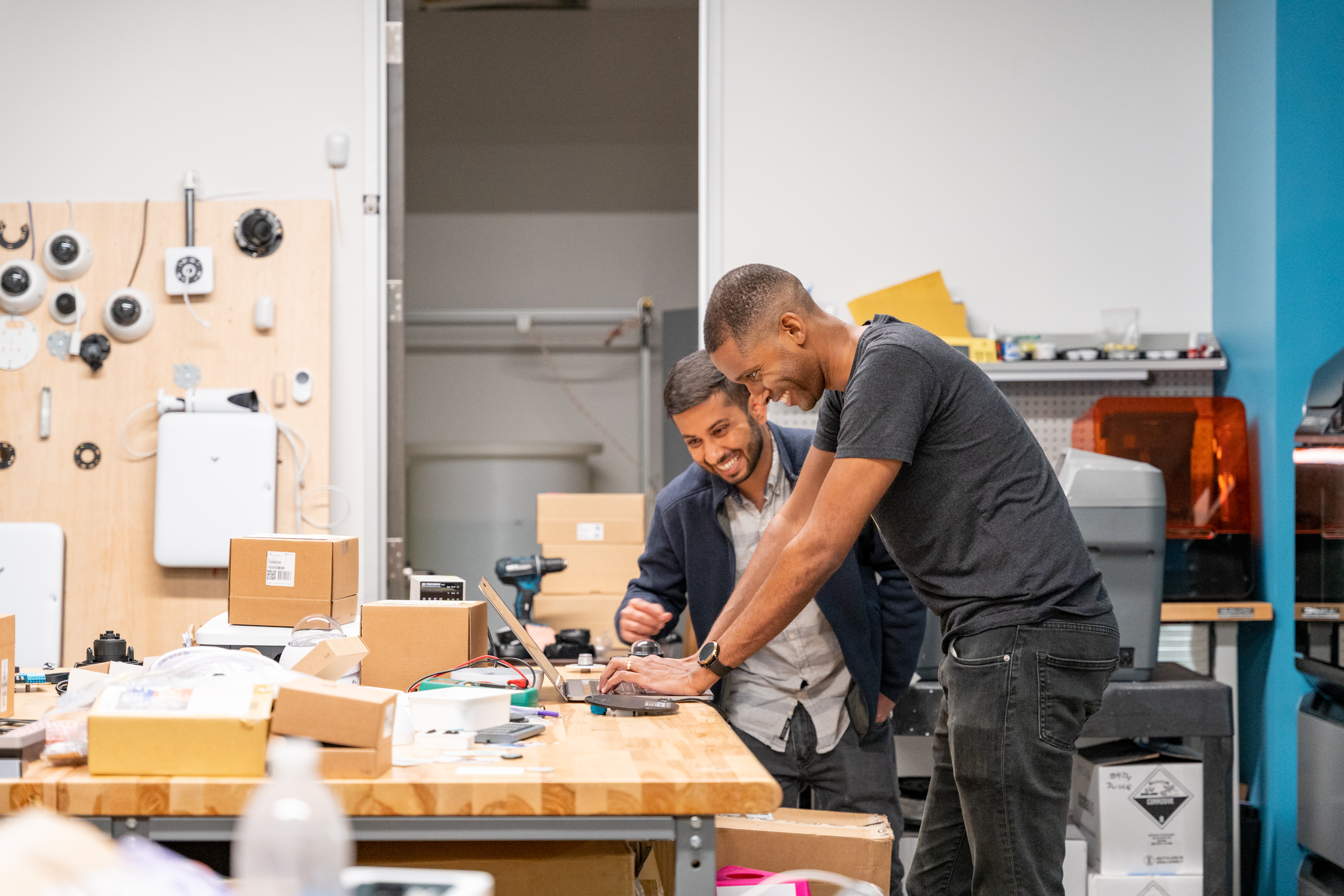
Why did you join Verkada?
Shaival: I previously worked on consumer cameras at a six-person startup, and Verkada was a good opportunity to move to the enterprise side. What I enjoy about our startup culture is that things move fast, we’re focused on getting the work done and less weighed down by processes. You can try many things and wear multiple hats, which helps you grow as an engineer. This usually isn’t possible at a larger company where you would be limited to a very specific role.
Mickael: I joined mostly thanks to Filip, Martin, and Rob (our CEO, CTO, and VP of Engineering). I was considering several offers, but I was intrigued by my conversation with Filip in which he shared his vision of making organizations safer through the integrated building. After I was given a demo of one of our first camera models, I saw the impact I could have on the firmware side. For me, it meant there would always be a difficult engineering challenge to solve and a good chance I wouldn’t get bored anytime soon — so far so good!
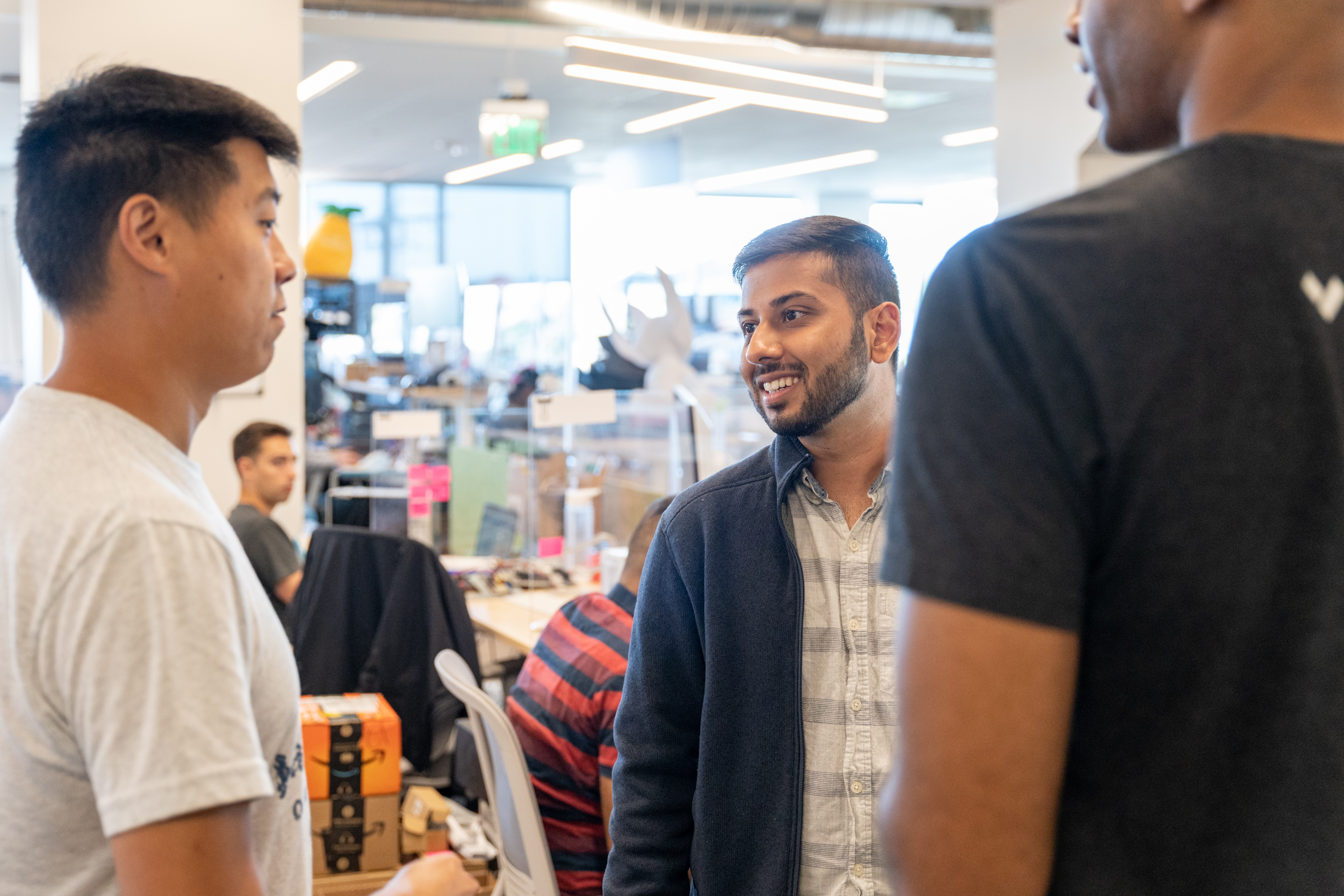
Tell us about a recent project that your teams (hardware and firmware) worked on together. What were some key things that made it a success?
Shaival: We worked together on a new camera for our Fisheye series, which we developed from ground-up. This was a complete redesign of our first Fisheye which was launched in the very early stages of the company, and it was a cooperative effort which took many iterations — electrical, mechanical, firmware — to get things right. We care strongly about our customer and partner’s experience, which is reflected in how we build products; we test everything thoroughly before moving onto the next stage, which is probably the most important thing to keep the bar for quality high.
Mickael: As is the case for most companies, our teams have a lot of interaction in the early development stages of the device because of all the mechanical components, which require software to test if they work correctly. As we get closer to the final design and have less bugs to fix, we have less interactions but still work closely as we continue testing.
Shaival: Our teams see each other every day in the initial design stage of the project. The firmware team was more involved when we were choosing the processing power and ideal memory size. From the initial design level, all the way to production when we launch the camera, it’s a very close collaborative effort.
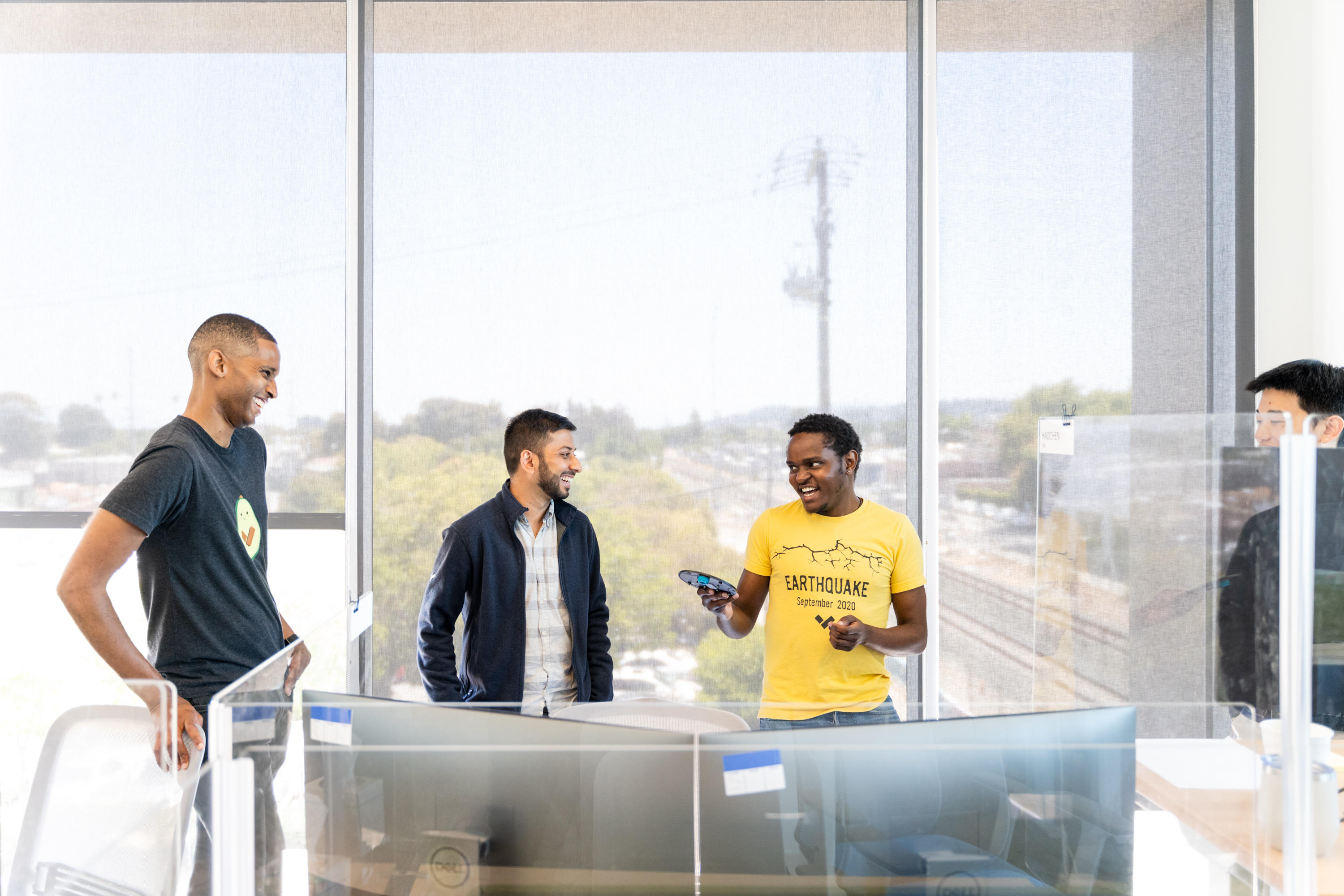
What is the biggest challenge you face as an engineer at Verkada?
Shaival: The most challenging part of the job is the pace at which we are launching the products. You want to make sure your product is well-developed and properly tested, but you also want to move fast. There has to be a balance of both, and you have to make decisions while keeping the timeline in mind. We’re fortunate that everyone at Verkada understands how challenging it can be to design hardware; you need to take your time with the initial design phase to prevent issues later in production.
Mickael: Especially considering that our hardware has an industry-leading lifespan — backed by a 10-year warranty — you have to take into account that complexity.
Shaival: We do lifetime testing when we develop products. But when we’re developing the rollout product we have to make decisions that may impact timelines, think cross-functionally about other teams, collaborate with them, and ask them, ‘How much is this going to affect you?’
Mickael: On the firmware side, it really depends on the product. The first product was really challenging because it contained a new chipset, essentially the brain of the device, and we were using a new development kit. It took us a while to develop, automate, and ensure that anything could run on the camera. We needed to understand how the chipset works, which involved a lot of back and forth with the vendor.
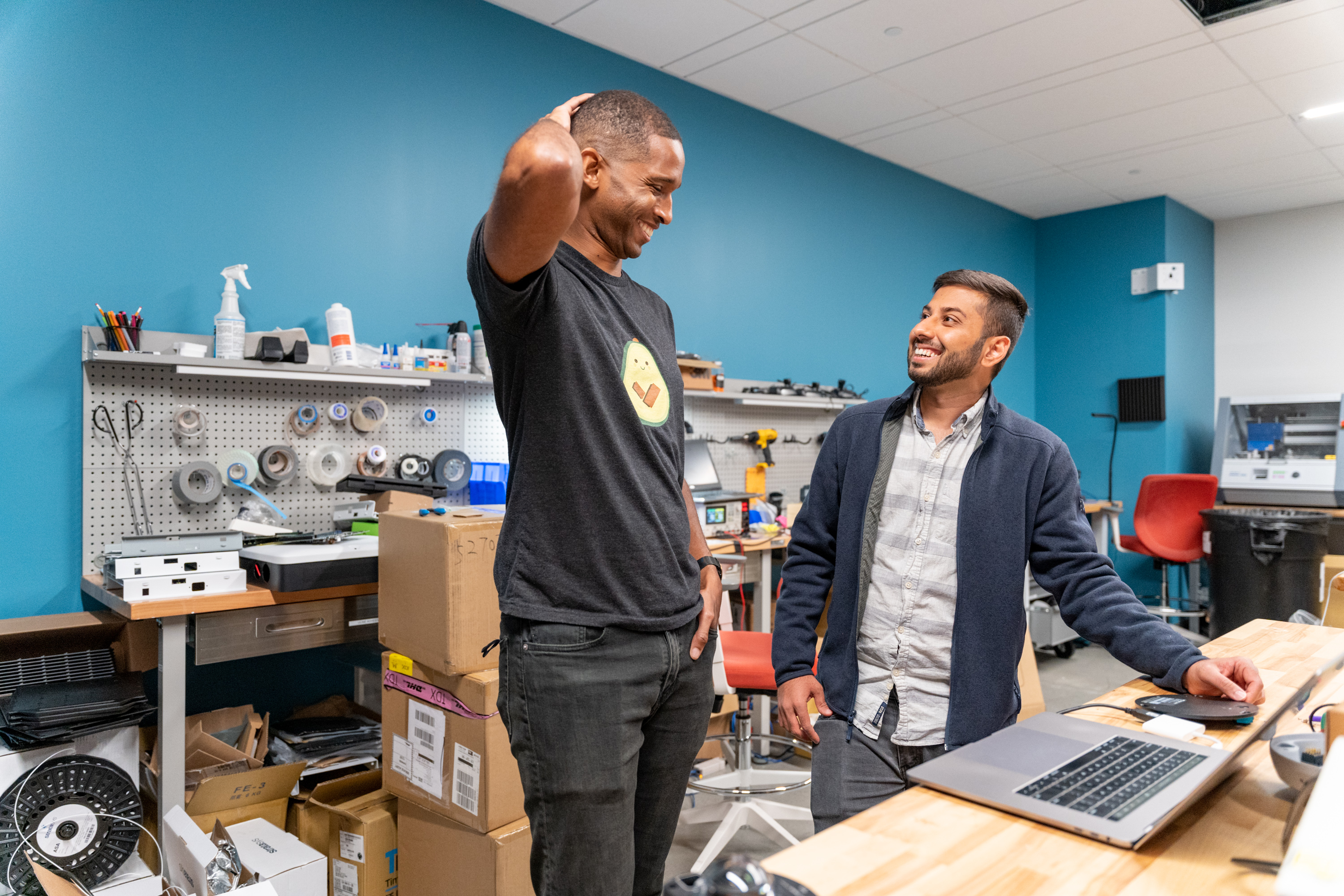
Verkada has a great internship program for new graduates. Thinking back to that time in your career, what advice would you give them?
Mickael: My general advice for new graduates is to get very good at exploring by themselves, and to read between the lines in docs. In school, the docs and reports are usually well-made; but at work, docs from vendors can be very incomplete. If you’re missing information, you have to be proactive about doing what you can to gain that knowledge, understand how to read between the lines, and also be able to explore, test, and figure things out by yourself.
What are some ways that a new grad can make the biggest impact early on in their career?
Mickael: There is always something to do to help on the firmware side; for instance, validating a piece of hardware — let's say an accelerometer which we use to detect device tampering, or the light sensor which measures how much brightness there is outside.
Shaival: On the hardware side, Verkada provides you with a great opportunity to work on a product end-to-end. Since you’re a part of a small team, you get to actually interface with the product, work on it, test it, validate it, and learn about why it was made in a certain way. As a new grad, you don’t necessarily work with real hardware at many companies; but at Verkada, you get a meaningful experience where you can actually help us move the product forward. For example, right after the design phase, there’s a lot more work to do in terms of reliability testing. You can actually interface with the hardware and understand why it’s behaving a certain way, which could be a great learning opportunity for a new grad.
Mickael: That’s actually a very specific part of Verkada’s engineering culture. During my interning years, there were some places I worked at where my projects were never deployed, and that’s never the case at Verkada. Every time we have an intern, we try to make sure that within the first few weeks of the internship, they’ll have an impact at Verkada and know everything they contributed is actually being released. We don’t assign them to throwaway projects, what they’re doing is actually meaningful and stays with us for several quarters — sometimes years.

What makes you most excited to start your day?
Shaival: Every day is different, but what excites me the most is being able to work on and learn something new. To give you an idea: when I’m collaborating with the firmware team on the new SOC, or the brain of the camera, I might run into problems that I haven’t seen before because it’s the first time we’re developing the product, which has very specific requirements; a US-based chipset, for example. Every time I incorporate new SOCs, it moves us towards the goal of improving image quality, which is good for the end customers. It’s very interactive across all teams, including product, then eventually the features trickle down to the firmware team once hardware is finalized. Building the new Fisheye — our CF-81 — was one of the customer-driven demands where we wanted to enhance image quality and computer vision capabilities on the camera itself, and that’s how we chose and transitioned to our new SOC.
Can you talk about the new SOC?
Shaival: The new generation SOC is more machine learning- and computer vision-driven on the hardware itself. We learned that our customers like edge-based analytics: they want people counting, line crossing, features that are possible with the new hardware. We want to build something new with our cameras that takes customer considerations into stride and give them enhanced capabilities. That’s how product development starts.
Mickael: The funny thing is that we’re talking about 10 years ahead, we haven’t actually started discovering the software for that — we’re still working on it. But our customers give us insight into where the future of physical security is headed, and it drives a lot of our innovation. Thanks to customer feedback, we can always be looking ahead at what to build next.

How is AI being used in our hardware?
Shaival: We’re always finding ways to enhance the capabilities of our devices by incorporating more machine learning/computer vision/edge analytics in the software. But we don’t want to rely on just software to do that, we want the hardware to be capable on a device-level, and essentially help make the software more efficient. We’re working on having more machine learning capabilities on the device hardware itself, and we’re constantly making changes and building new products. That’s how we stay ahead of the curve.
What are some tactics that the firmware team uses to make software more efficient?
Mickael: We’re always optimizing to make our features as lean and efficient as possible. Because we support our customers for 10 years, longevity is always at top-of-mind. We don’t want to tell our customers, ‘We just released a new feature, but you can’t have it.’ We try very hard to bring all the features that we release on the new cameras to the older models in some form. After trying them out, customers often choose to upgrade their cameras because they’ve gotten a taste of what the newer models are capable of. Our goal is to deliver the best customer experience, and we want to give our customers as many features as possible, even if it’s on an older device.
What’s your favorite part about working at Verkada?
Shaival: There’s a huge opportunity for advancing quickly in your career because you can take on more responsibilities and ownership than you would at a larger organization, where you’re confined to a particular task. With a small team, I’ve had the opportunity to lead some of the camera line products and understand from a management perspective why certain decisions need to be taken. Being able to interface with the product and executive team gives me a high-level understanding of why we need to build certain products. I help them explore the answers to these questions in my work, which is good for not only the company, but my personal growth as well.
Mickael: Where I’m going is different from what I’m doing now. The breadth of different challenges/technologies that I am able to tackle is a breath of fresh air, and keeps things interesting for me. We give our engineers agency, because some of the best ideas come from within. When faced with a problem, an engineer’s dream is to try to fix it — that’s something everyone is involved in.
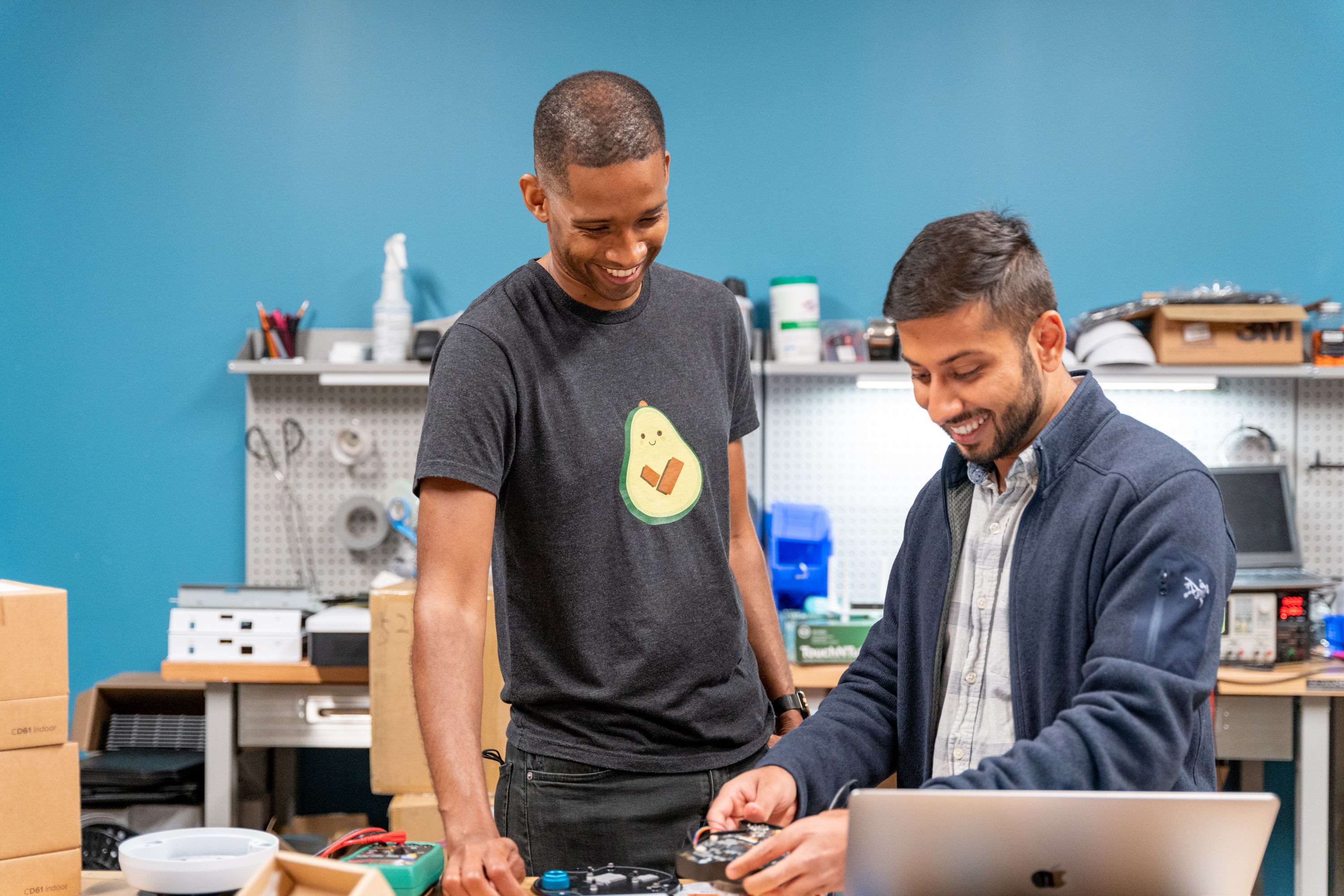
How has Verkada contributed to your growth? How have you contributed to someone else’s?
Mickael: My managers check up on me to make sure I’m happy and doing what I want to do. I get feedback from them as well, ‘You’re good at this here, but you might want to improve this,’ and they provide me with resources to do so. For example, Ben (my manager) suggested that I get more into mentorship and take classes that could help me be a better mentor. The way you approach mentorship is different from being a teacher: when you’re teaching you’re typically above someone, whereas with mentoring you could be on an equal level and friends.
Shaival: On the hardware side, you have a lot of freedom — just like the software side. You can choose your own design, as long as you have a good reason for it. You’re allowed that freedom to make your own decisions and designs. We also have meetings and feedback sessions with our managers on what to improve and where to progress in the next step of our career, whether it’s being a manager or mentor. As a camera lead, I know how I can grow into the next step of my career. With the growth of the company, it’s exciting to see the impact that we have building products that make the world a safer place.
Help us make the world a safer place — we're growing fast and looking for new talent!
View open roles or email questions to [email protected]



